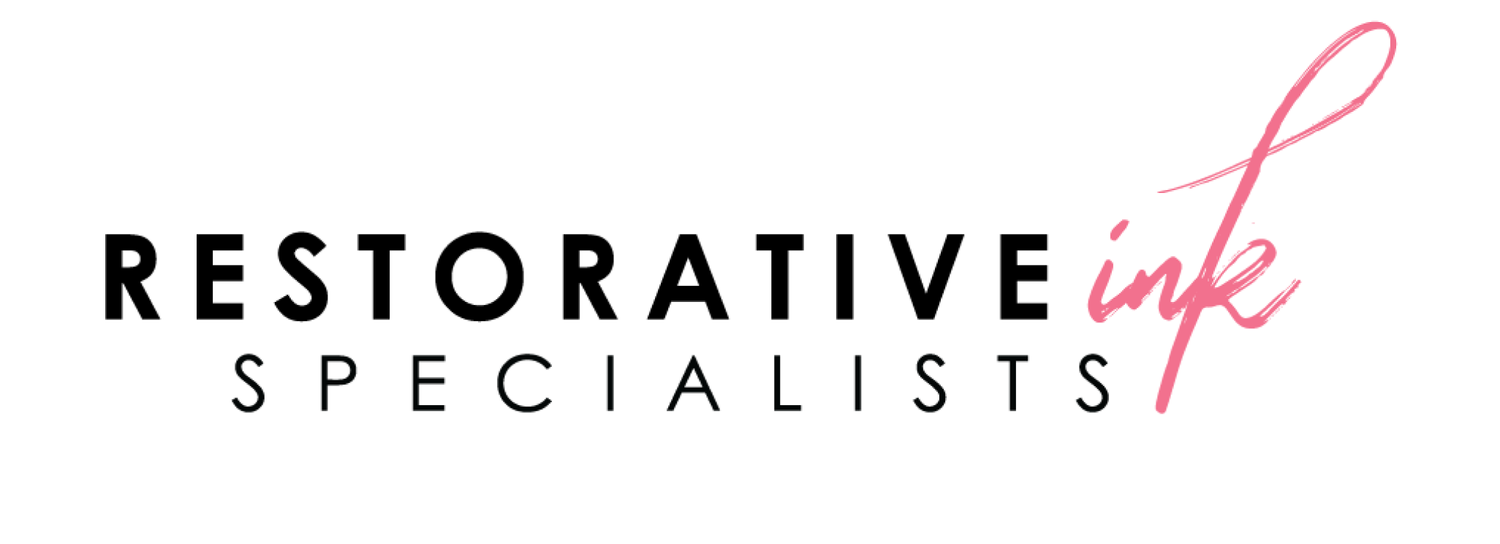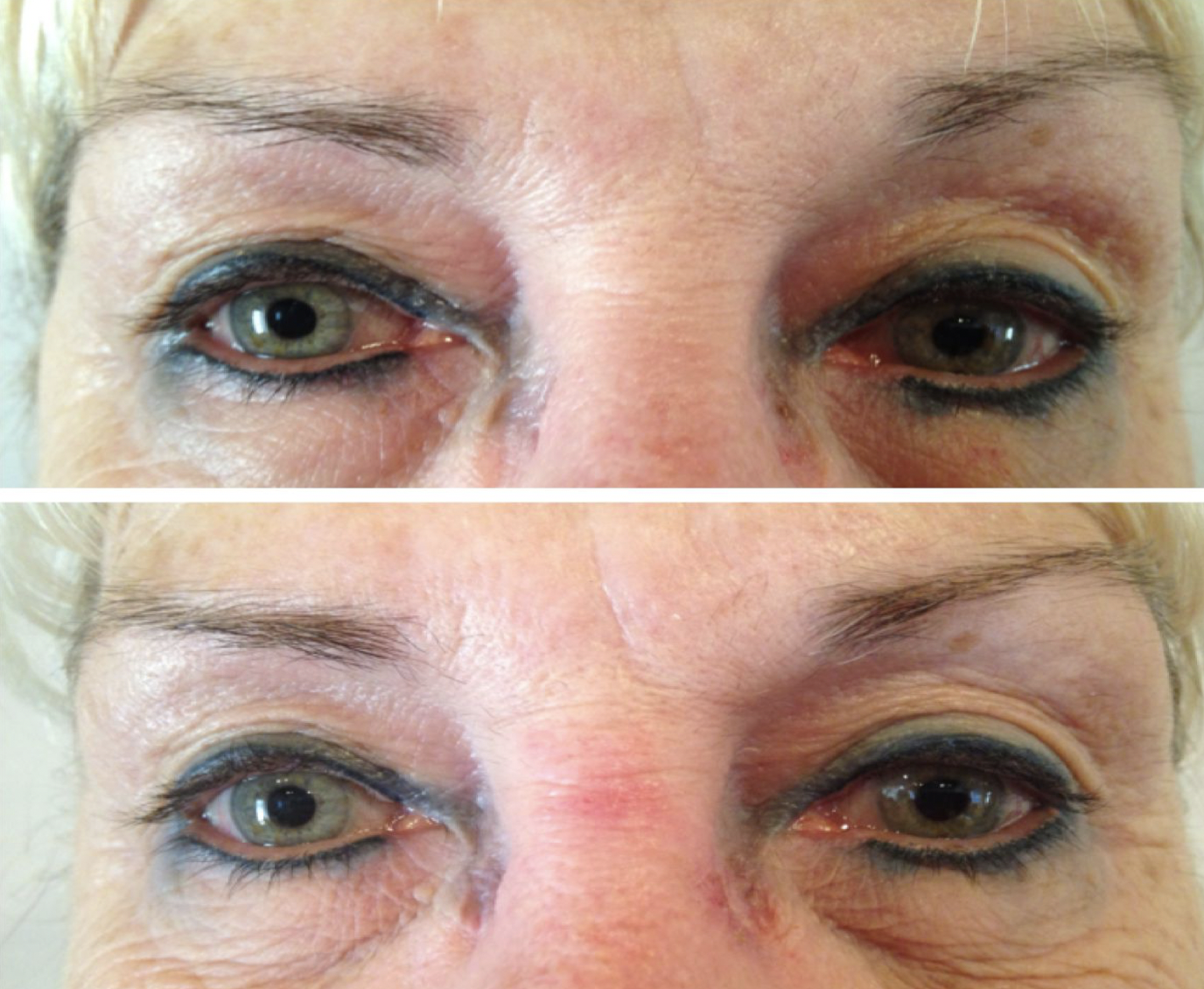OOPS, I did it again...
I want to share a story about a colleague completing a virgin eyeliner procedure in her facility. She used proper sanitation and sterilization techniques. Her shop was very busy on that day, in part because she was also having some construction completed in another part of the facility while performing this procedure. During the appointment the client was very patient and allowed her to step away several times during the two-hour eyeliner procedure. When the technician interrupted the procedure to check on the workman, her very patient client just rested. More than an hour and a half had passed and she finally completed the procedure. As the client was being shown the completed eyeliner in the mirror, the technician mentioned that bruising was not uncommon as a temporary side effect from an eyeliner procedure. A bit of aftercare was suggested, and Vaseline from the grocery store was recommended. They rescheduled in 3 weeks for a touch up.
Three weeks later the client came back and what had been identified as bruising was still there. The technician was not at all concerned. A touch up was done and the client paid and went on her way.
This photo was taken 2 weeks after the touch up procedure.
Review of eyeliner basics:
Keep procedure time as short as possible to minimize swelling
Do not overwork the skin; it is better to add more at a follow up appointment
Schedule touch-up appointments a minimum of 28-30 days after initial procedure
Never leave a client during an unfinished procedure for other projects out of the
treatment room
Know your pigments; use pigments that have MSDS sheets
Use pigments that are SPCP approved; substandard pigments can be risky
Understand what acceptable bruising would be and what it does/ does not look like
Know and use appropriate needle configurations for eyeliner procedures
Correctly apply anesthetics safe for use around the eye according to product
instruction/information
Provide proper aftercare products along with written aftercare instructions
Eyeliner is a very time sensitive procedure. During any eyeliner procedure there is always swelling. The increase in the water table (swelling) of the area could potentially increase the risk of pigment migration. In this particular case, a substandard pigment was used. When asked if it was carbon or iron oxide, the technician did not know. She actually thought the migration was bruising. The technician had the pigment and gave it to me. I called the company to let them know this had occurred. I was told the pigment was vegetable based and was not to be used alone as it was a mixer product.
The technician continued working on other clients...
This photo was taken 3 weeks post treatment.
This particular client had her permanent cosmetics done several years ago. She needed a touch-up and the technician the client chose told her she had been licensed for many years. However she neglected to let the client know exactly what licenses she held. The same technician referenced in the first case, again completed this eyeliner procedure using the very same pigment, once again resulting in migration.
When the client looked in the mirror immediately after the procedure, the technician let her know bruising was not uncommon. This client was concerned as she had the procedure previously, and knew what was typical for her. After a week she went back to the technician and let her know this was not correct. The technician reached out to other colleagues and was directed to me for help. I explained migration to her, and to her
credit, the technician was honest regarding the process and the procedures she had completed.
After I further investigated what happened, now for the second time, I asked to meet with the technician before she completed another eyeliner procedure. I asked her to throw away the pigment. I also requested she check her needles before proceeding on any permanent cosmetic procedure. I reached to her trainer and left three messages requesting a call back; my calls were never returned. The pigment company was also contacted; they had no comment.
I never did meet with the technician, and now I have two clients that need help.
So now what? There are two clients with a migration problem. Migration around the eyes is tricky. Based on my opinion and experience, the only safe removal option is saline.
Review of removal basics:
Consult your insurance carrier to determine approved products and training required
Take the appropriate training class before you attempt any removal
Limit procedure time to approximately one hour or less to decrease the possibility
of scarring
Schedule touch-up appointment a minimum of 45-60 days post treatment
Never leave a client during a procedure
Correctly apply anesthetics safe for use around the eye according to product
instruction/information
Be informed regarding any removal or anesthetic product contraindication,
especially in the eye area
Use appropriate barriers for the eye tissue
Removal within the eye area is time consuming. Based on my experience, the average removal process will require 5-8 treatments, and it takes over a year to complete.
Three treatments, 6-weeks apart
Three treatments, 6-weeks apart
As members of the SPCP, we have a code of ethics and standards to follow. There are many advanced training classes being held all over the country. If you are having difficulty with a specific procedure, reach out to a trainer in your area and make your practice OOPS free.




